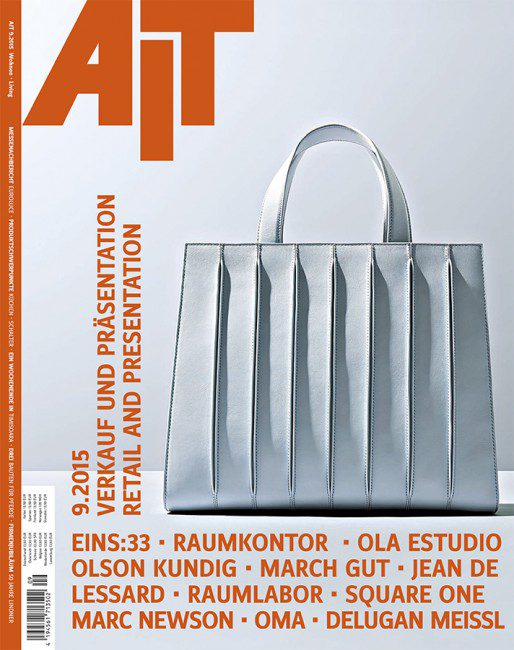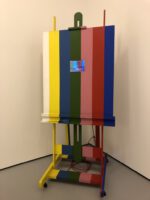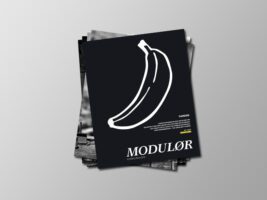All perceptions and ideas of our existence in the environment are structured spatially and temporally
This corresponds to the nature of our sensory experiences, which the brain stores in a memory model of the external world. The order of our experiences in memory follows the principle of the greatest possible success in action. It is through the mistakes, errors and failures we recognize that we learn, as the brain involuntarily corrects and expands our spatial concepts. If memory areas are impaired by age, illness or accidents, our imaginative space changes in the same way as our perceptual space. On the other hand, we can develop our imaginative space in a targeted way through sensory and cognitive engagement with the perceptual space. Every form of environmental design therefore has direct consequences for the structures of our brain. The cultural space provides us with the instructions for its use. We perceive where we have to orient ourselves, how we use things or what we can interact with. Aesthetic concepts such as beauty are relevant in terms of developmental dynamics, as they not only serve our pleasure, but are also indicators of cultural achievements and education. The term “cultural evolution” is not a metaphor, but the hallmark of our species, which no longer simply adapts perfectly to its habitat, but shapes it according to its needs and thereby develops itself further. The perception of space initiates and promotes a cross-generational learning process that requires constant renewal and can therefore never be completed. Young people see how society works and where it fails. The use of space shows what is important and useful to us or has lost its purpose, what needs to be preserved or renewed.
The study of our perception of space is the leading science of environmental design, from urban planning and architecture to interior design and scenography
If we rely solely on our own gut feeling when assessing the perceptual qualities of rooms, we neglect the perspectives of most other people. Empathy is an advantage, but by no means a sufficient basis for assessing the quality of perception of living spaces. Our perception of space changes over the course of a lifetime and is also dependent on numerous environmental factors. Our demands on the design of space change with physical and mental maturity, the influence of culture and education or our state of health. People need individually designed spaces because we are different and have different needs and interests. What is too small for one person may be too big for another. The same applies to our needs for publicity and privacy, comfort and asceticism, tranquillity and activity, to name just a few parameters of spatial perception that have direct consequences for interior design. A space is well designed if the range of options available is perceived positively by people and used in a variety of ways. The systematic examination of other people’s perception of space can make you more sensitive to the challenges of practice, provide you with arguments for implementing meaningful ideas and encourage you to experiment responsibly with new spatial design strategies.
Space is a system for understanding and describing the world
We perceive space with all our senses, which is why it is not only important what a room looks like, but also what it says to us, how it feels, sounds, smells, tastes or controls our movements. The perception of space conveys much more to us than basic sensory perceptions. Space is not a container in which things are located. Space is formed by the sum of the emotional and cognitive relationships that we enter into with our environment.
Light falling through a window onto a well-chosen reading place can be more important for the perception of space than the size of the room or the height of the ceiling. In the perception of space, what exists outside of us merges with what we make of it in our imagination or through our actions. We consciously perceive what we visualize at the moment of our encounter with the environment. More than 99% of information, on the other hand, is processed unconsciously, although it has a decisive influence on our behavior and actions. We can bring this high proportion of unconscious spatial perceptions to light and make use of them by taking our emotional and spontaneous behavioral reactions seriously and searching specifically for the causes of our thoughts, feelings and actions. Space is a language system that tells us what the things assembled through it mean, how we should behave and what constitutes our scope for action.
Space functions like a language, which is not surprising since our physical interactions with the environment are the basis of all communication
The semantics and syntax of space can be seen in the course of the brain waves in the process of perception. While the so-called “what stream” leads to semantic memory, the “how/where stream” in procedural memory activates the action contexts and behavioral states associated with the event. Our perception of space is not focused on abstract shapes or mathematically determinable geometries, but rather on the emotionally effective and cognitively significant parts of the external experience that form a meaningful whole. Spatial perception follows the principle of probability, which can be easily observed in the learning process of children. Routines of action develop from the use of things and the discovery of our interaction possibilities, which is why we hardly notice that the perception of space is a process of appropriation. A quick glance is usually enough to get our bearings, recognize the potential for action and form an opinion. Children experience that the spaces in their environment increasingly tell them how the things around them behave and what they can use them for. As adults, we feel the expansion of our perceptual abilities in this way as soon as we enter unfamiliar spaces, engage in new experiences and try out challenging activities. This is a plea for unconventional ideas in interior design, such as trying out new color concepts, lighting situations, material combinations and furnishing suggestions.
Functional structure of human spatial perception:
Processing of spatial data from all senses in the brain. The structure is formed through interactions between humans and the environment. Any function can be impaired or lost as a result of brain lesions.
A) What – memory stream: multisensory meaning structure of space (semantic memory)
1. color and light structure of the room
2. form and material structure of the room
3. equilibrium structure of the space
4. movement and time structure of the room
5. odor and taste structure of the room
6. tone and sound structure of the room
B) How/Where memory stream: action structure of the space (procedural memory)
1. gestural structure – For what purpose is something shown?
2. typological structure – How does something show itself?
3. topological structure – where and when does something appear?
4. perspective structure – To whom and to what is something shown?
The atmosphere of a room is made up of all levels of human perception
Most spatial data, such as light reflections, mirroring, transparencies, color variations or ambient noises and smells are processed unconsciously. If they are missing, rooms appear artificial and alienating, like animated graphics and films in which the ambient light and the modulation of the surface structures are missing, or like speech and music in which no overtones resonate. In film production, atmospheres are therefore generated with great effort, from the selection of locations and shooting times to the post-production of the film material. Here, many levels of spatial perception are carefully staged, which are often neglected in the area of interior design. What effect do the proportions of the spatial situations have on the people involved? Where does the light come from? What color temperature and color spectrum does the light have? How does the light spread in the room? How do the visible surfaces feel to the viewer? How does a room sound? What does a room smell like? Anyone who now thinks that smells or surface qualities cannot be perceived visually is referred to the state of brain research. All perceptions are associatively interlinked and are activated at the moment of experience. For this reason, colors can appear fresh, stimulate the appetite or cause nausea. Room atmospheres have a particularly emotional effect, as they attune our entire body to the external event, which can even be proven to influence metabolic functions. The atmosphere of a room determines the intensity and quality of our experience.
Further reading:
Axel Buether; The formation of spatial-visual competence. Burg Giebichenstein publication series 2010
Axel Buether; Ways to creative design. Methods and exercises. Seemann Henschel 2013
Axel Buether; Color. Visual spatial effect and communication. DETAIL Practice 2014



